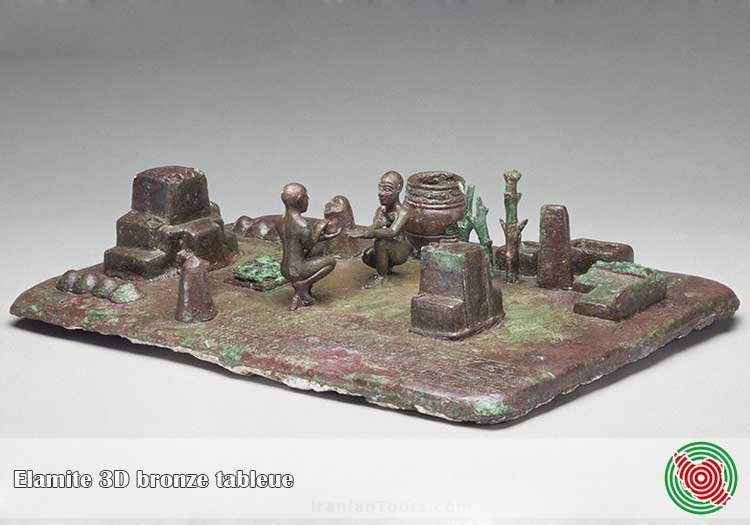

Timeline
c. 2700-1500 BC : Old Elamite Period
c. 1500-1000 BC : Middle Elamite Period
c. 1450-1250 BC : Iron Age I
c. 1340-1250 BC : a new capital and religious complex, Chogha-Zanbil zigurat in Khuzestan
c. 1250-800 BC : Iron Age II
1119-1098 BC : Rule of Nebuchadrezzar I of Babylon
c. 1100 BC : Nebuchadrezzar I of Babylon invades Elam, plundering te countryside and destroying Susa ; The Iron Age that began more than 400 years before in the Near East moves to Europe
c. 1000-539 BC : Neo-Elmaite period
800-550 BC : Iron Age II
825 BC : Rise of the Medes
776 BC : Greece’s first recorded Olympic games are held.
728 BC : Deioces founds the Median Empire
Brief History
In the late 4th and early 3rd millennia, a brilliant ancient culture came into being on the Iranian territory — Elam, The Land of Gods”. The origin of the Elamites is unclear. Their earliest kings reigned around 2700 B.C. These early rulers were succeeded by the Awan (Shustar) dynasty, which was then replaced by a new ruling house, the Simash dynasty. About the middle of the 19th century B.C., power in Elam passed to a new dynasty, that of Eparti.
About 2500 B.C., the Elamites founded Susa, the capital of their country and the seat of their king. At that time, Elam first appeared on the world stage as an advanced civilization, centuries ahead of Crete and Mycenae (2000 B.C.), Anatolia (1800 B.C.), China (1500 B.C.), Phoenicia (1300 B.C.), and the Hebrews (1200 B.C.).
The Middle Elamite period began in the 15th century B.C. with the rise to power of the Anzanite dynasty, of which Untash-Gal was the most renowned king. He founded the city of Dur Untash (modern Chogha-Zanbil), one of the wonders of ancient architecture, which has survived to this day. During the reign of Untash-Gal’s successor, Shutruk-Nahhunte, Elam became one of the great military powers of the Middle East. Shutruk-Nahhunte captured Babylon and carried off to Susa the stele on which was inscribed the famous law code of Hammurabi (the original is now in the Louvre, but the National Museum in Tehran has a copy). The days of the Elamite military empire were, however, numbered. In a series of campaigns between 692 and 639 B.C., the armies of the Assyrian king Ashurbanipal destroyed Susa and brought the Elamite kingdom to an end. Other important ethnic groups that coexisted with the Elamites on the Iranian plateau were the Urartians and the Mannai. The kingdom of Urartu, which arose in the 9th century B.C., was centered in northwestern Iran and extended into present-day Turkey and Armenia. The Mannai kingdom was located to the southwest of the Urartians and was overtaken by them in about 800 B.C.
